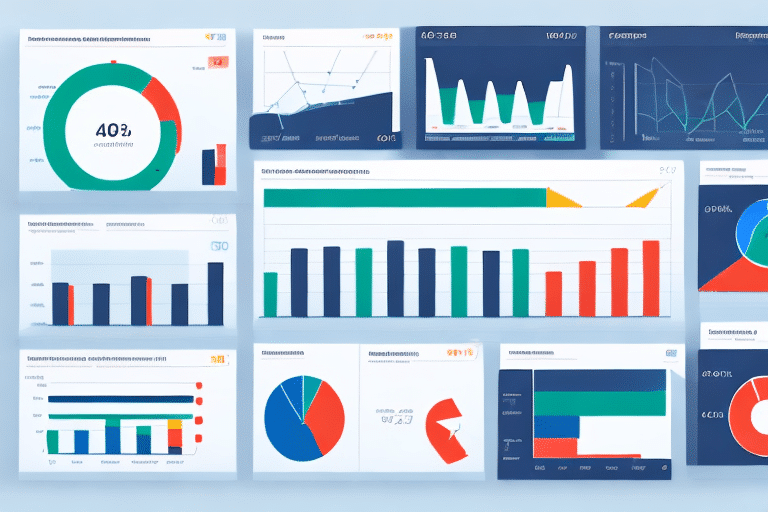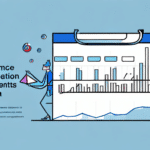Introduction to Customer Retention Dashboards
Retaining existing customers is significantly more cost-effective than acquiring new ones. A customer retention dashboard is an essential tool that enables businesses to monitor key performance indicators (KPIs) influencing customer behavior. This guide delves into the creation, implementation, and maintenance of a customer retention dashboard, ensuring your business can sustain long-term growth by keeping customers engaged and satisfied.
Understanding Customer Retention Dashboards
What is a Customer Retention Dashboard?
A customer retention dashboard aggregates and visualizes KPIs related to customer behavior, such as acquisition rates, churn rates, and customer lifetime value (CLV). By providing a comprehensive view of these metrics, businesses can identify trends, spot potential issues, and make informed decisions to enhance customer loyalty.
Why Is It Essential for Your Business?
Implementing a customer retention dashboard allows businesses to:
- Identify Opportunities: Pinpoint areas where customer experience can be improved.
- Measure Effectiveness: Assess the impact of retention strategies over time.
- Data-Driven Decisions: Utilize real-time data to guide strategic initiatives.
According to a Forbes report, increasing customer retention rates by just 5% can boost profits by 25% to 95%.
Key Metrics to Track
Essential KPIs for Retention
Identifying the right metrics is crucial for the effectiveness of your dashboard. Key metrics include:
- Customer Lifetime Value (CLV): Measures the total revenue a business can expect from a single customer account.
- Churn Rate: The percentage of customers who stop using your product or service over a given period.
- Repeat Purchase Rate: The proportion of customers who make multiple purchases.
- Net Promoter Score (NPS): Gauges customer satisfaction and loyalty by asking how likely they are to recommend your business.
These metrics provide actionable insights that can guide your retention strategies. For a comprehensive overview of customer retention metrics, refer to the Harvard Business Review.
Selecting the Right Tools
Dashboard Platforms
Choosing the appropriate tool to build your dashboard depends on your business needs and budget. Popular options include:
- Tableau: Offers advanced data visualization and real-time analytics.
- Power BI: Integrates seamlessly with Microsoft products and provides robust reporting features.
- Google Data Studio: A cost-effective solution for creating interactive dashboards with Google ecosystem integration.
- Excel: Suitable for smaller businesses or those just starting with data tracking.
For businesses seeking scalability and integration with various data sources, Tableau and Power BI are excellent choices.
Building and Implementing Your Dashboard
Step-by-Step Tutorial
- Identify Key Metrics: Determine which KPIs are most relevant to your business goals.
- Gather Data: Collect data from sources like CRM systems, website analytics, and sales platforms.
- Select a Dashboard Tool: Choose a platform that aligns with your data complexity and budget.
- Create Visualizations: Design charts and graphs that clearly represent your data.
- Customize the Layout: Organize your dashboard for easy navigation and interpretation.
- Share and Collaborate: Ensure stakeholders have access and understand how to use the dashboard.
- Monitor and Update: Regularly review and refine your dashboard to reflect changing business needs.
For a detailed guide on setting up your dashboard, the Tableau Learning Resources offer extensive tutorials and best practices.
Analyzing and Acting on Data
Interpreting Customer Behavior
With your dashboard in place, leverage it to understand customer behavior patterns. For instance:
- Identify High Churn Areas: Understand at which stage customers are leaving and address the causes.
- Segment Profitable Customers: Focus marketing efforts on segments that offer the highest CLV.
- Optimize Customer Journeys: Enhance touchpoints that lead to higher satisfaction and retention.
Implementing changes based on these insights can lead to significant improvements in customer loyalty and business performance. The McKinsey report highlights the impact of data-driven decisions on customer satisfaction.
Avoiding Common Pitfalls
Frequently Encountered Mistakes
When building a customer retention dashboard, be mindful of the following common errors:
- Irrelevant Metrics: Tracking KPIs that do not align with business objectives can lead to misguided strategies.
- Overcomplication: Including too many metrics or intricate visualizations can overwhelm users.
- Data Misinterpretation: Incorrect analysis can result in faulty conclusions and ineffective actions.
- Lack of Updates: Failing to regularly update the dashboard can render it obsolete as business needs evolve.
To avoid these pitfalls, ensure that your dashboard remains focused, user-friendly, and adaptable to changing business environments.
Maintaining and Enhancing Your Dashboard
Best Practices for Ongoing Success
Maintaining your customer retention dashboard is essential for sustained effectiveness. Follow these best practices:
- Regular Data Reviews: Continuously monitor and analyze data to detect emerging trends.
- Adapt to Changes: Update metrics and strategies in response to shifts in customer behavior or business objectives.
- Integrate New Data Sources: Incorporate additional data points to enrich your analysis.
- Stakeholder Engagement: Keep team members informed and involved in interpreting and acting on data insights.
By adhering to these practices, your dashboard will remain a valuable tool in driving customer retention and business growth.
Conclusion
A well-designed customer retention dashboard is indispensable for businesses aiming to foster long-term customer relationships and achieve sustainable growth. By effectively tracking and analyzing key metrics, businesses can implement informed strategies that enhance customer satisfaction and loyalty. Follow the guidelines outlined in this guide to build and maintain a robust customer retention dashboard, ensuring your business stays competitive and customer-focused in an ever-evolving marketplace.




















